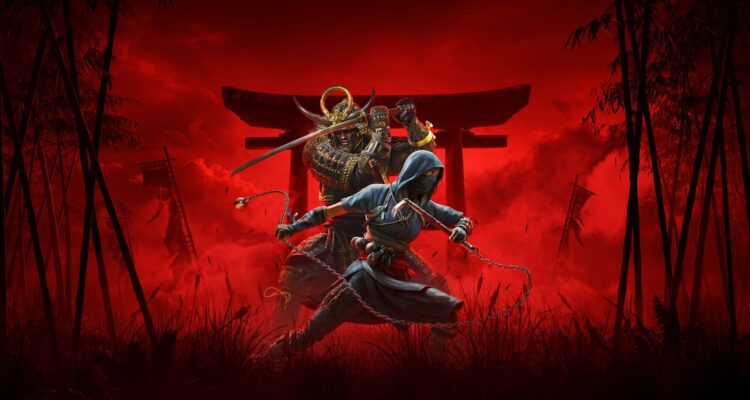For quite a while now, fans of the series have been begging for an Assassin’s Creed game set in historical Japan. Now, after close to two decades, those vocal folks have received their wish in the form of Assassin’s Creed: Shadows, which is about to launch after a sudden delay.
While late 2023’s entry took things back to yesteryear and marked the return of the original formula, Assassin’s Creed: Shadows is a modern game. By that, I mean that it’s another open world, RPG-style, title in the vein of Origins, Odyssey and Valhalla. Like those three releases (especially the second and third), it’s also a very big, lengthy and overwhelming experience that one could play for hours without feeling like they’ve made much progress. Due to its massive size and a short turnaround, this is a review in progress, because we’ve admittedly yet to beat this time consuming game.
Assassin’s Creed: Shadows is set hundreds of years in the past, and takes place in a late 1500s take on Japan. There, we meet our two main characters: Yasuke and Naoe. The former is a Black man who’s come to Japan with Portuguese priests, in an attempt to curtsy favour with the game’s mean spirited Lord Nobunaga. Meanwhile, Naoe is a female Shinobi, and a daughter whose father is murdered early on. She’s out for vengeance, and to fight back against the Lord, who’s also attacked her village and others she loves.
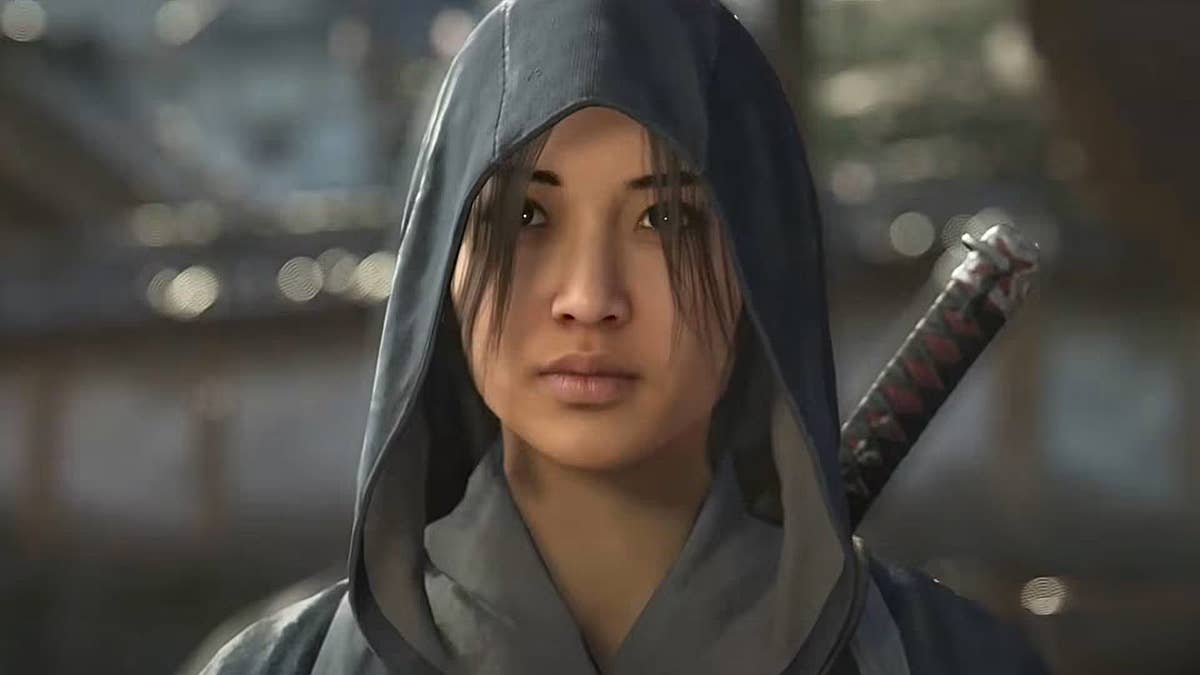
Unlike Syndicate, where the two siblings played relatively similarly, Shadows’ two playable protagonists are not the same types of heroes. While Yasuke is a tank, who almost effortlessly slices his way through groups of enemies and can destroy breakable doors and barriers, Naoe is a very slight and agile Shinobi. She’s more adept at the series’ classic stealth style gameplay, mixing climbing with sneaking and quiet assassinations. At times, she does jumps and flips during combat, and can also use things like throwing darts and smoke bombs.
Needless to say, this is a notable change to the series’ formula, and one that won’t appeal to all. While you can switch between the two characters after a certain point, playing as a tank may make things too easy, and doesn’t always feel like Assassin’s Creed, especially since he can’t climb very well. As such, I assume that most will opt to play as Naoe more often than not.
Another thing that Shadows introduces is a parry system, which I never really want or like in such games. I don’t enjoy or care for Souls titles, and don’t like to have to deal with parrying. Thankfully, this parry window is very generous, and it’s not always necessary since you can roll around and open enemies up to attacks that way. It’s a tried and true formula, though, given that you can deflect attacks that flash blue but must roll away from the more dangerous, red ones.
Of course, these characters also continue to have the light and heavy attacks that were prominent in the last three games, and you continue to use the shoulder buttons (and/or trigger) to pull them off. For stronger attacks, it’s as easy as holding the button down longer, unless you’re interrupted first. The biggest adjustment herein comes from remembering to press the left shoulder button to block and attempt parries. Those are two things you’re taught very early on, though, and will get better at as you go along.
There are also some pretty basic special moves to pull off, using other buttons and combinations. Yasuke’s stands out most, because he can essentially bull rush enemies and take them out in stylish fashion while doing so. This can be quite gory, and is also nice on the eyes thanks to visual filters. That said, the controls, in general, can be a bit imprecise at times, so that can get in the way of the fun. It’s especially noticeable during interior segments, and when you’re dealing with multiple foes.
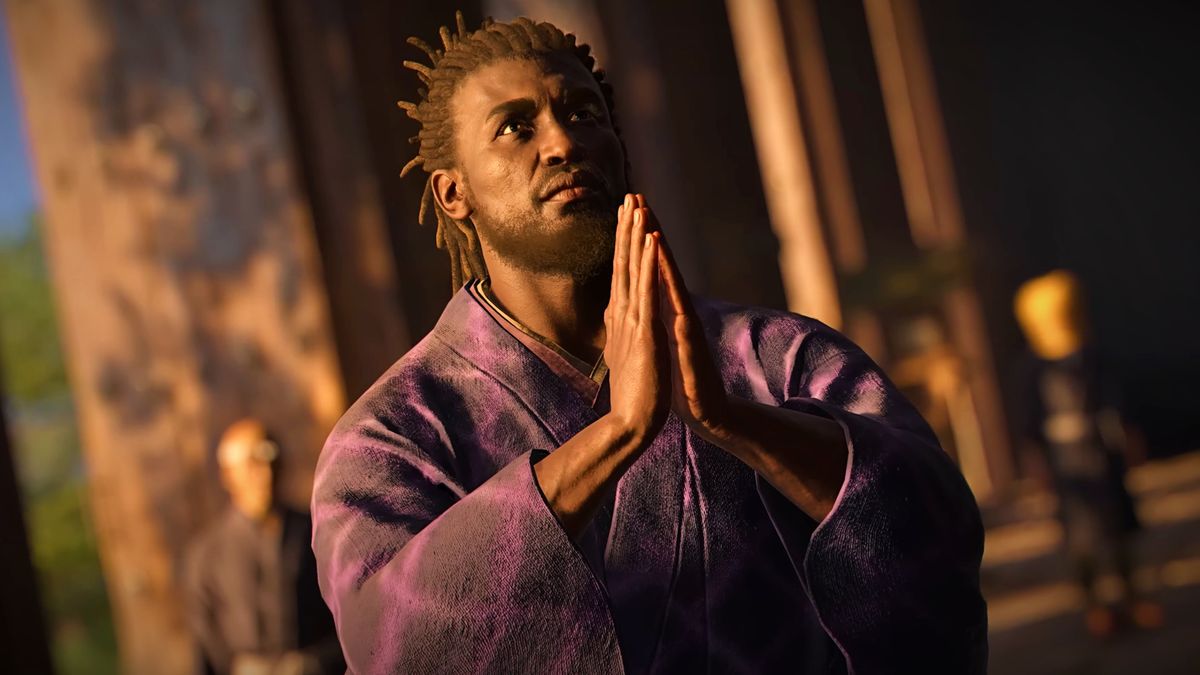
There are a lot of different enemies to take on, and they’re spread generously throughout the map. Certain ones are armoured or carry shields, which must be taken into account. It’s also possible to use your special vision to see these jerks through walls, or to scan the environment and tag them. Like in previous games, enemies appear red when you do this, and these ones can occasionally be assassinated through screen doors if you get the opportunity. On top of that, you’ll enter into occasional boss battles, which often feel like duels and aren’t that difficult. It’s possible to cheese certain ones if you decide to, but you’ll sometimes have to deal with secondary foes who attack with melee or fire guns at the two main characters.
You can expect a typical Assassin’s Creed map, which is large but not as obscene as Valhalla’s. Each region has its own level suggestion, so you’ll need to be careful, but sometimes you’ll just have to run away. As mentioned above, there are a lot of enemies, and they aren’t just located in the many forts and castles that litter the world.
Before starting this massive campaign, the menu will ask you if you want the suggested experience or a more guided one. I was alarmed by this, because it says that you’ll need to search, discover and scout areas to find your objectives instead of just getting quest markers. I didn’t want to choose that, but it was the suggested way to play and the other apparently streamlines things so that certain segments aren’t the same. It also prevents some achievements and trophies from being unlocked. That said, the rumour is that this only affects one of those things, and it’s the one related to using scouts. I cannot confirm, though, because I stuck with the exploration mode despite feeling like I was forced into choosing it.
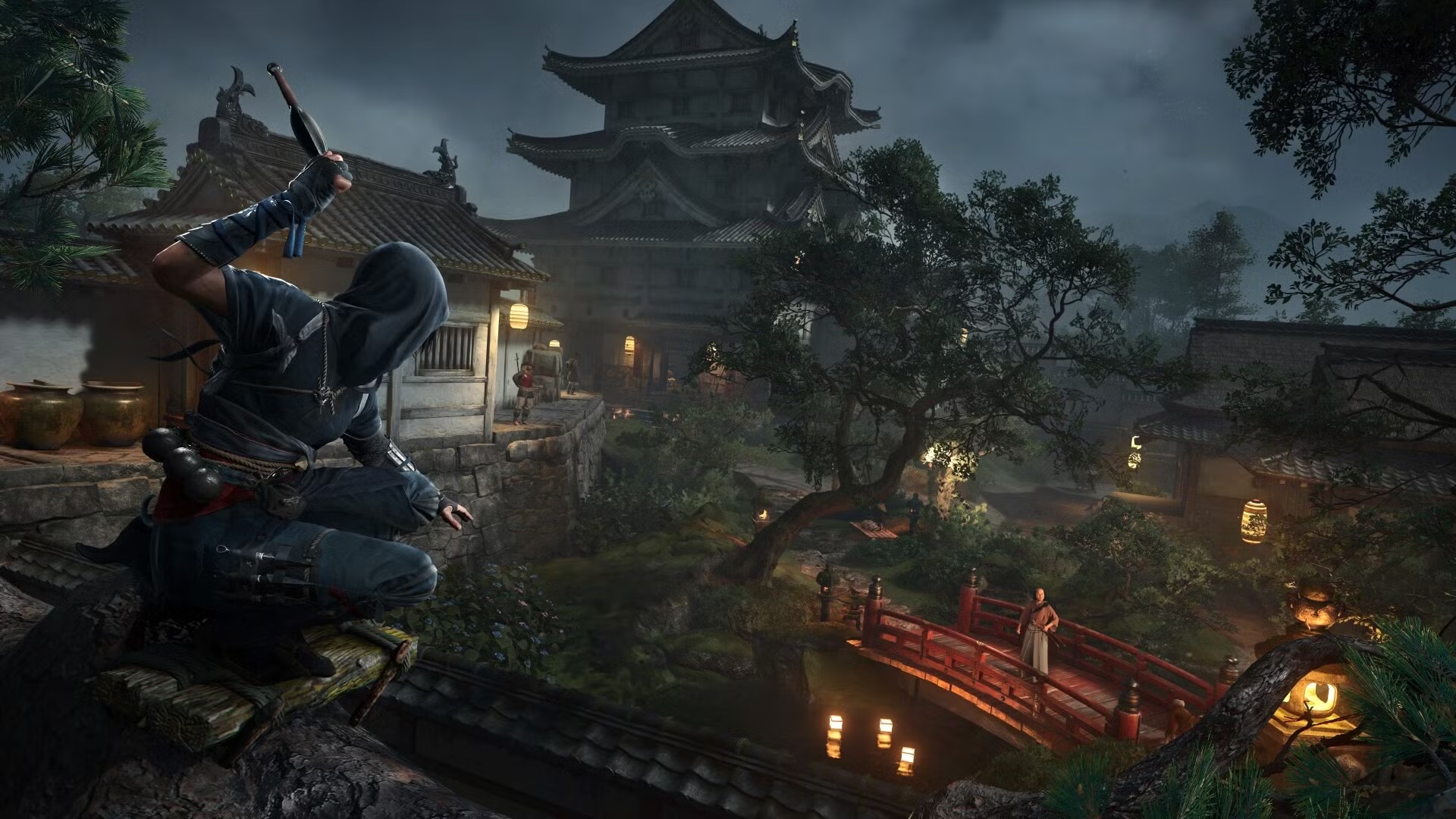
I don’t know about you, but I don’t particularly like having to read vague directions to find my objectives. I play video games to have fun and relax, and I hate getting lost while trying to find a certain spot on a big map. That unfortunately ended up being the case at times during my sessions with Assassin’s Creed: Shadows. Sometimes the directions would be so vague that I’d find myself looking in the wrong place. In fact, one of the early objectives said my target was located in the first region, but he wasn’t. Another told me to look for a camp near a waterfall, but I had a hell of a time finding it. Some of the areas it mentioned did not appear on the map, despite me scrolling, zooming in numerous times and going to numerous different marked locations.
I did not enjoy that aspect of this game at all.
As mentioned above, this iteration introduces scouting. Early on, you’ll unlock a hideout, which can be added to by building new things (like a stable, a forge, and more), and by meeting, helping and inviting new people (and stray animals) in. You’ll need to find new building materials to aid your cause, but will be rewarded with experience boosts or lower costs for fast travel bureaus.
Scouts can also be unlocked and employed to help find objectives. If you’re successful and have picked the right area, the objective marker will then appear on your map. Don’t expect the base exploration mode to keep your map objective marker free, though, because it won’t. You can even hold the left d-pad button to toggle a path to any marked location. It’s very problematic, though. I had a lot of trouble with it not guiding me to the right places.
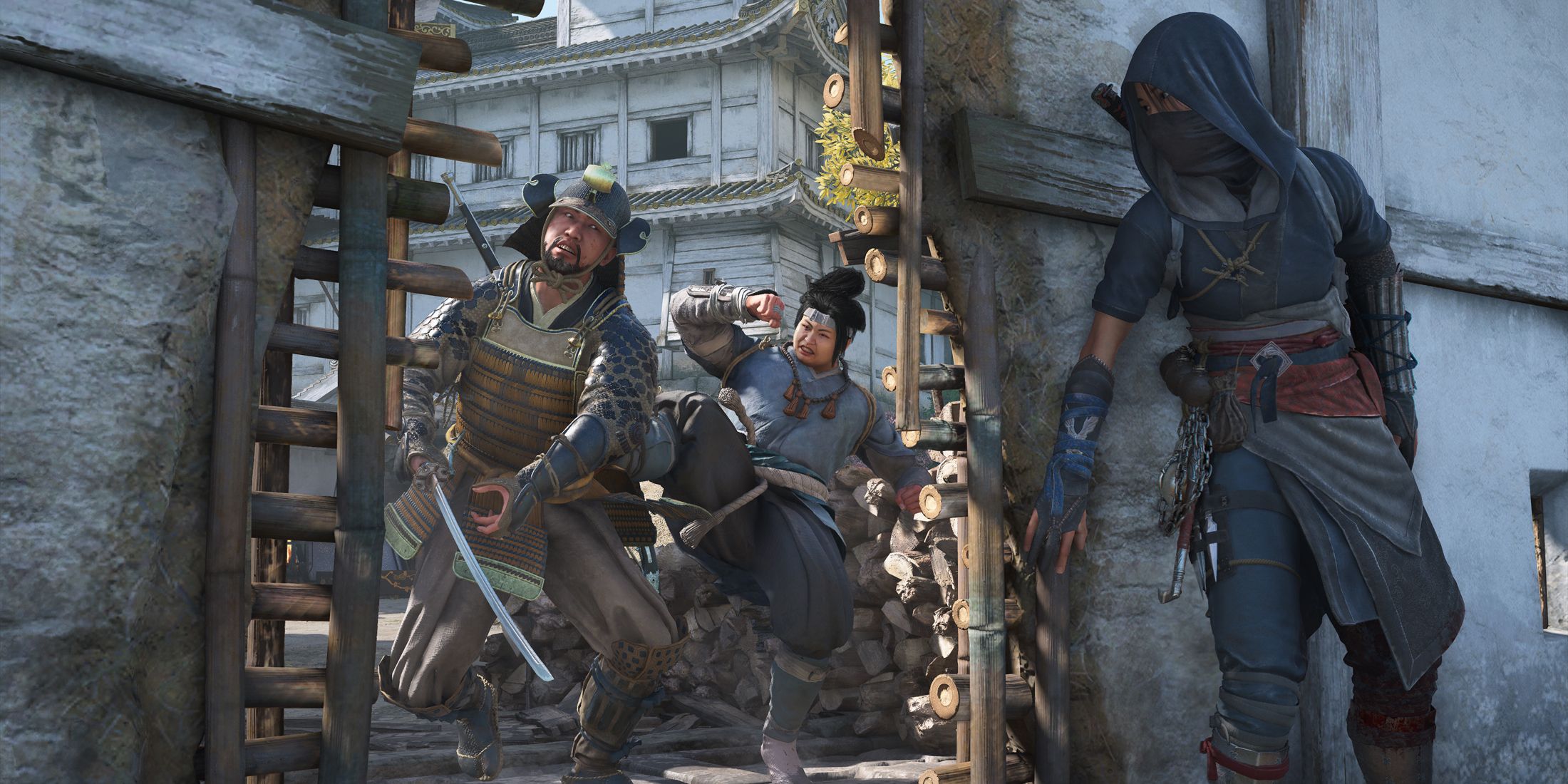
The series’ iconic towers return, but they’re more in line with Breath of the Wild. By that, I mean that you can scan the nearby horizon and highlight a few unknown locations to go out and find. There are a lot of them, and this is in no way an improvement. I preferred the older system, and also wish that the objective-driven areas of exploration weren’t so big, as it sometimes feels like finding a needle in a haystack.
Along the way you’ll discover people in need of help, vendors of different types, things to pray to (which provide different types of buffs), and places to sit and press buttons to a beat in order to meditate.
This occasionally frustrating meditation minigame generally sends you into the past, in order to complete side quests and training sessions featuring Naoe’s dad and a friendly old lady from the village.
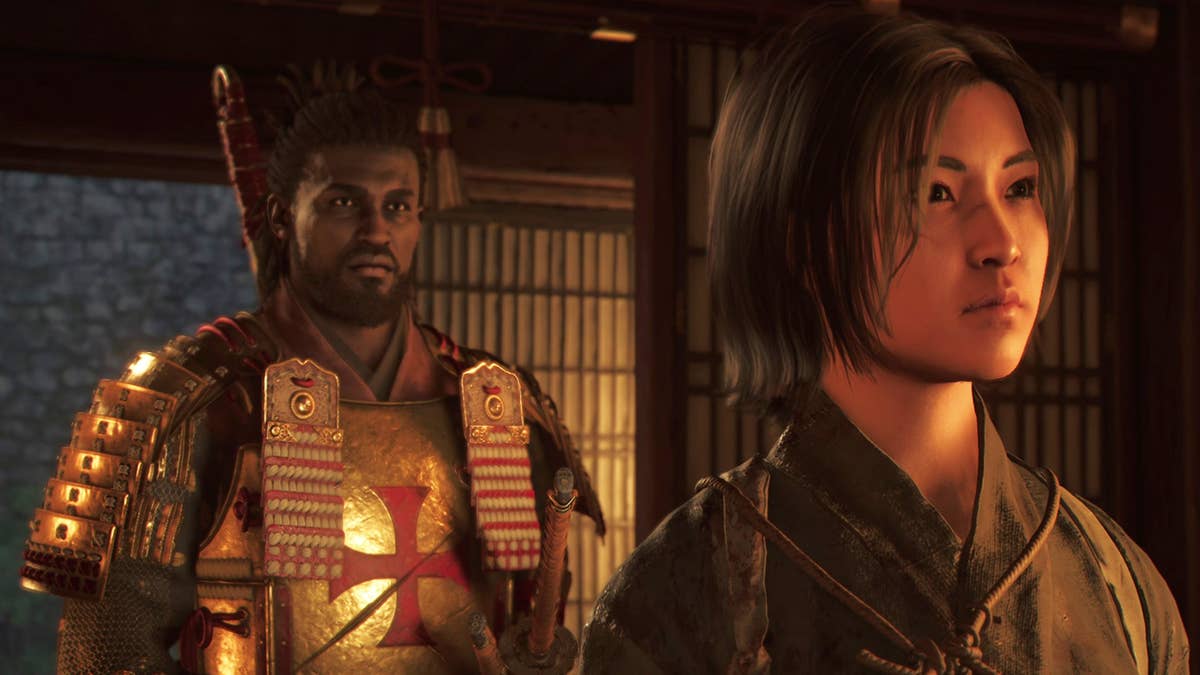
Another nice thing about this game is that you can snuff out candles and take out lights in order to aid in your stealthy ventures. It improves the already solid stealth mechanics, by allowing players to truly use light and shadow to their advantage. When you’re hidden, your chosen character will be outlined in gray, allowing for more stealthy options.
Assassin’s Creed: Shadows is also a faster game than any which came before it, at least when Naoe and the horses are concerned. She’s a very quick and agile fighter, who can thankfully run very fast. The horses are also quite speedy, and can be called quickly, in order to gallop away from danger or towards a new objective. Yasuke is obviously different given his size and talents, as he doesn’t move as quickly or as efficiently, and cannot climb like his limber counterpart.
Sometimes you’ll find yourself venturing into caves (which can be pretty confusing to navigate) in search of special chests and gear, or completing obstacle courses to find them. You see, Naoe has a grappling hook, which helps her swing from trees and climb high towers, which are difficult for her other half. At times, challenges and more traditional environments will require you to swing from one tree, jump, and then swing from another. I liked this; especially when I’d slide down a ramp and then have to time a jump in order to make it to the next area.

Of course, there’s also a gear and weapon system, but you won’t be picking up gauntlets and boots. It’s more streamlined than that, and doesn’t feature as many options, though the types of armour and weapons you can pick from have lots of customization options. It’s possible to equip body armour, a head covering or mask (which can be hidden), and a couple weapons. The latter can then be augmented with different coloured sheaths, varied types of blades and additional charms that add statistical boosts.
The whole thing is wrapped up in a brand new menu, which is reminiscent of the Call of Duty launcher. Although I don’t have room to have any other games installed, I was able to look at numerous other Assassin’s Creed characters and titles through this menu, and it seems like it’s possible to launch them through it.
Once I selected the proper game, I was shown an introductory cutscene featuring an ad for the Animus. During its runtime, there were occasional glitches, where someone would cut in and say that it was lying to me, or something like that. It set up an intriguing story, but the narrative surrounding Naoe and Yasuke can be very wordy, heavy on cutscenes and kind of unoriginal. I’ve struggled to identify with the characters, and feel like I’m just going through the motions. This isn’t helped by how repetitive the missions can be, even though they have you look into and then hunt down targets, including another secret society. Although you often do a couple of side quests to discover where a major target is, they’ve lacked some depth.
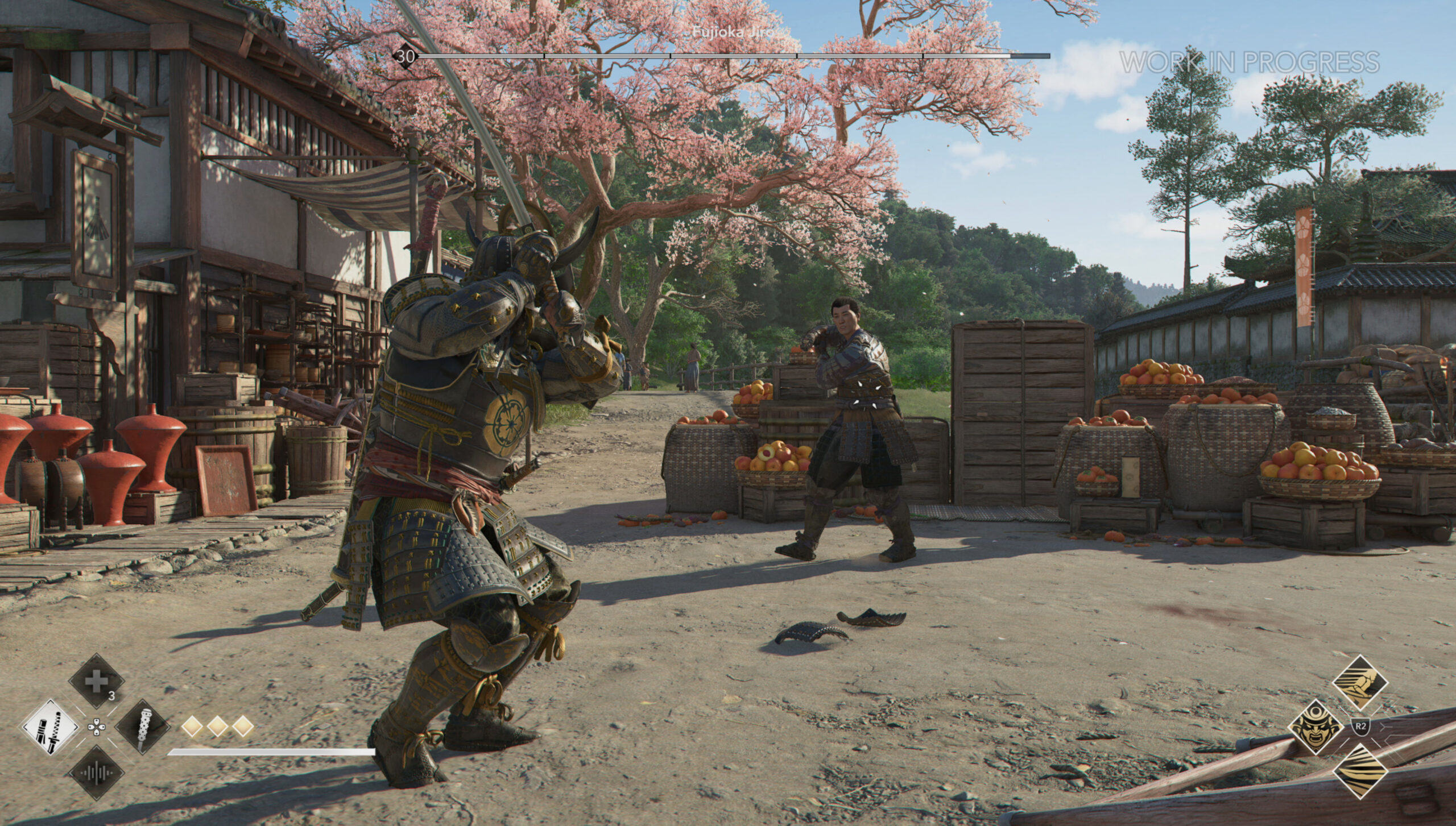
When this game was announced, I was slightly excited, but I’ve played so much Assassin’s Creed by now that I’ve admittedly got series fatigue. I really liked Origins, tried to beat Odyssey (which was great, but just too long, and too many games released around it), and found Valhalla overwhelming. Shadows is as well, and I really don’t like how lost I’ve gotten within it. It can be both overwhelming and underwhelming at the same time.
I’ve been a pretty big fan of this series since day one, as that’s when I bought the first game. I still remember all the vague advertising, but I called its twist ahead of time due to all of the visual artifacts in the gameplay trailers and magazine ads. I’ve finished most of them, and had a good time, but Shadows isn’t one of my favourites. It’s not even one of the better RPG ones, as I’d place Odyssey and Origins ahead of it. Sure, it’s a solid and pretty good game overall, but it’s lacking something and doesn’t stand out as much as it could’ve. Furthermore, Ghost of Tsushima did this setting a lot better and beat Ubisoft to the punch by several years. I’d originally avoided that game because I didn’t think it would be for me, but I fell in love with it when I played it on PlayStation Plus.
Presentation-wise, Assassin’s Creed: Shadows is rather pretty and polished, but it’s got some drawbacks. For one, some of the typical Assassin’s Creed character models don’t look the best. There’s also a lot of empty space within the map, including frustrating to navigate forests and cliffs, and the game can be glitchy. When I went to play it yesterday, I loaded my save and got about fifteen minutes in before I noticed that I couldn’t open the Xbox guide. I’d tried to look at the achievements list, but the guide wouldn’t come up. The game simply went dark and kind of paused. I tried turning the controller on and off, but to no avail. That actually made it worse, because the screen mostly stayed gray and paused. If I pressed the guide button, the game would go back to normal for a second before going dark again. I ended up trying to reset the console, but had to actually get up and hold the power button. I hated that, and it made me worry that it caused damage to my console. Then again, I’m kind of paranoid.
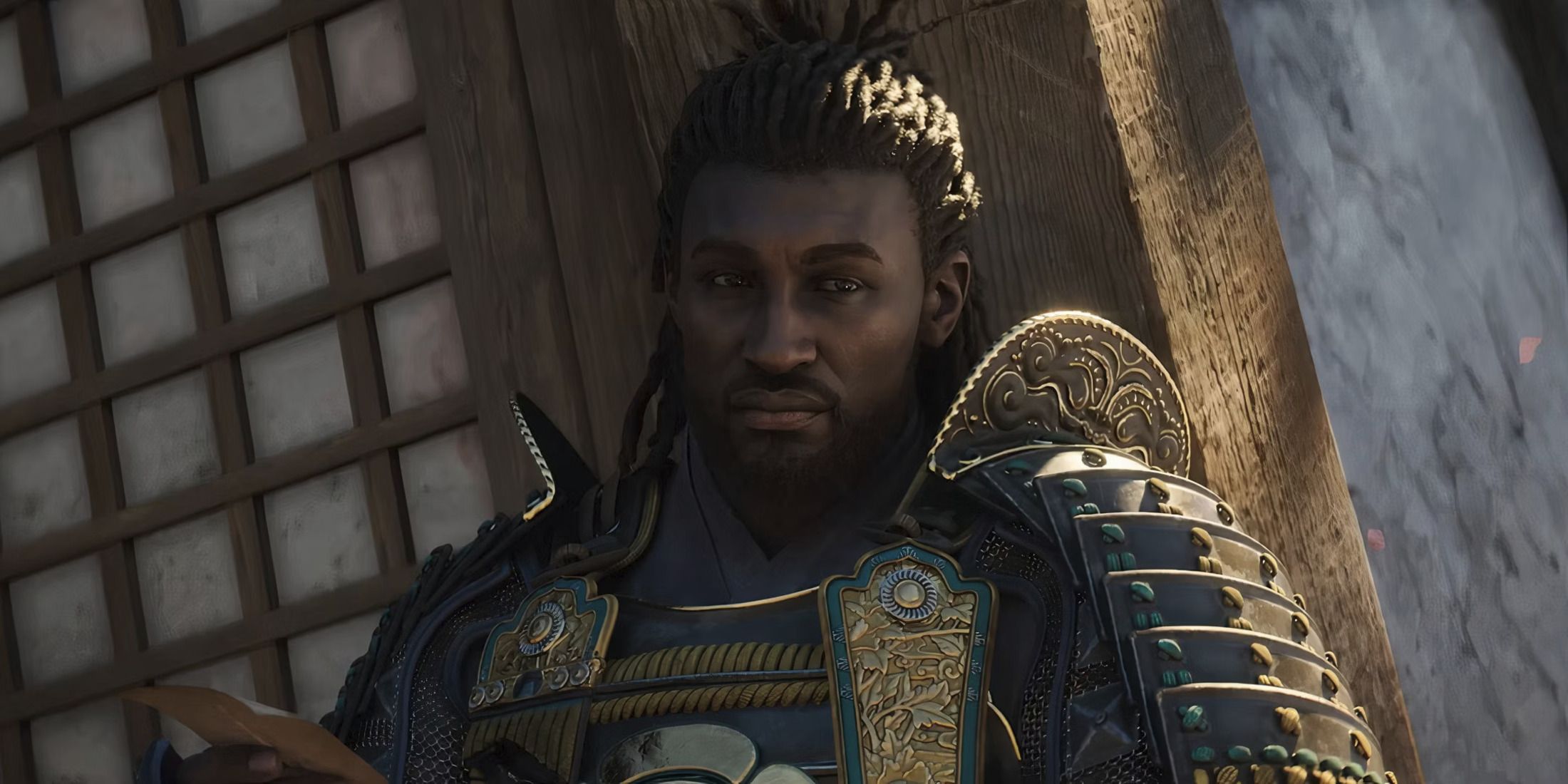
One of the best things about this experience is how pretty it can be, thanks to a nice-looking open world, some good lighting effects and the ability to get rid of light sources. The world is busy, feels lived in and has more residents than that of Ghost of Tsushima, and the major towns feel vibrant. Furthermore, the seasons change as you progress, and this can bring with it new challenges. For instance, some foes can see your footprints during snowy winter segments, and that chilly season can also reduce the amount of available brush to crouch and crawl within.
When I chose which settings to use, I was also tasked with choosing dialogue options. It was recommended that I opt for the full experience, by choosing a Japanese audio track with occasional Portuguese. That’s what I went with, and it’s been good, for the most part. The voice acting is solid, but some of it is admittedly a bit poor and grating. Given how wordy this thing is, it mars the experience some. The main characters are pretty well voiced, though. The dialogue they were tasked with saying and emoting could’ve been better written, but it’s decent overall.
The sound effects and music are also quite fitting, and there are moments where Ubisoft Quebec has introduced more unique music that wasn’t of this period. It made me feel like I was playing an interactibe Quentin Tarantino movie, and I liked that. However, I’ve read some complaints from others.
Assassin’s Creed: Shadows is an important game for Ubisoft, and a lot is riding on it. It presents something that people have been wanting for a number of years, but unfortunately doesn’t nail the landing. The result is a pretty good, but overwhelming and unspectacular game, which isn’t the best of its ilk. Those who love the series should enjoy it quite a bit, but if you’re not crazy about this series or its modern efforts then Shadows won’t change your mind.
This review is based on the Xbox Series X version of the game, which we were provided with.

